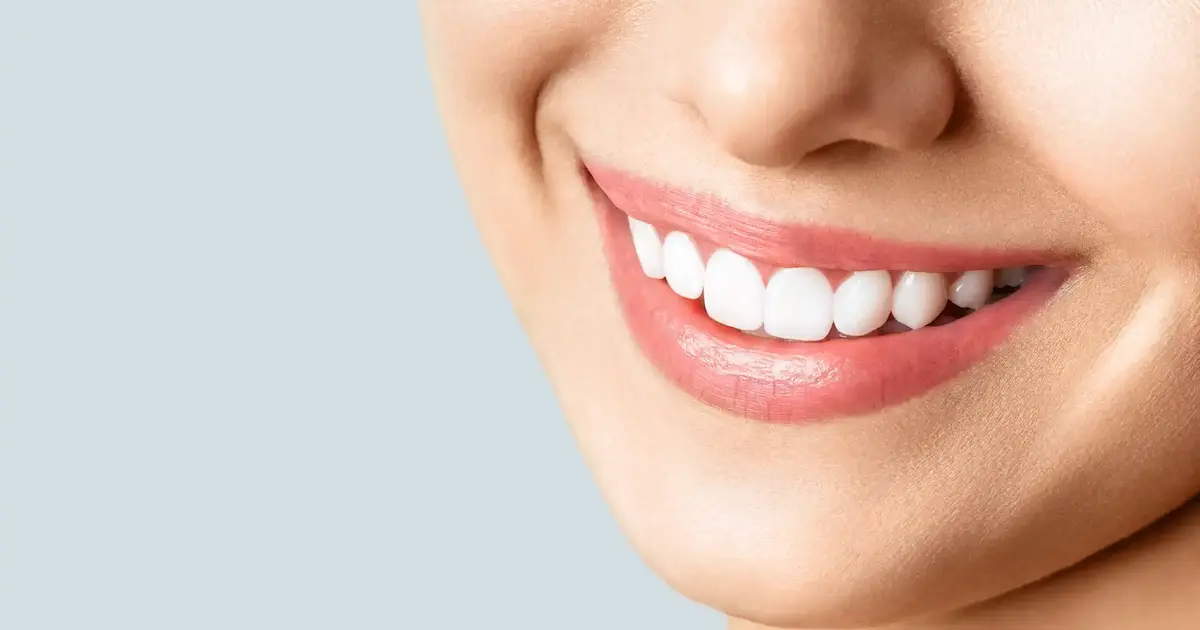
8 Tips To Maintain A Healthy Smile
And Why It Is So Important
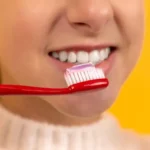
A smile is one of the most noticeable features a person has. Therefore, most people look forward to achieving a perfect and healthy smile with shiny teeth. Fortunately, this can be done with the help of your dentist and minimal effort from your side.
However, achieving it is only the first step. It is essential to take a few preventive measures to maintain your smile healthy and free of diseases afterward.
Everyone knows that teeth brushing is the cornerstone to maintaining good oral health. Nonetheless, other effective methods should be used along with teeth brushing to achieve the best results possible.
If you have been struggling to maintain your smile healthy, visit us at Smile Dental Clinic. Our dentist can talk you through the process of managing good oral hygiene and give you all the information necessary.
We will talk in this article about a few tips to maintain a healthy smile and explain why it is so important.
Why is maintaining good oral health important?
The main benefit you get from a healthy smile is teeth free of cavities and gums free of gingivitis or gum disease. This translates into living your life without any discomfort, pain related to the mouth and being more confident when you smile.
However, there’s more to it than that. Although it might seem surprising, oral health issues are deeply related to conditions outside the mouth. Among these, we can find diabetes, hypertension and infective endocarditis.
The reason why is that the mouth possesses many blood vessels. Bacteria can easily reach these vessels and spread to other areas of your body, such as the heart. Furthermore, a few dental problems can cause inflammation and worsen pre-existing conditions.
Therefore, maintaining a healthy smile means more than just brushing your teeth to prevent gum disease and cavities.
Dental care for a healthy smile
Maintaining a healthy smile doesn’t require much effort. Nowadays, it can be managed by dedicating a few minutes to your oral health daily.
Nonetheless, your dentist also plays an important role. Fortunately, maintenance appointments are usually quick and straightforward, and you can look for an affordable dentist near you.
A few recommendations to help you maintain a healthy smile include:
1. Brush properly
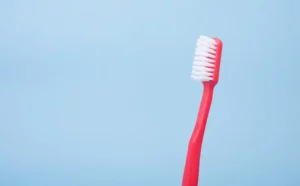
Dentists always recommend brushing your teeth at least twice a day: in the morning and before going to sleep. However, how you perform it is especially crucial and determines whether you manage to maintain a healthy smile or not.
The first thing to do is select the right toothbrush. The enamel is susceptible to erosion, although it is a strong tissue. Therefore, it is essential to choose a soft bristle toothbrush to prevent damaging your tooth. Brushing too hard using the wrong toothbrush can lead to tooth sensitivity. Furthermore, the eroded areas of the enamel might require a filling.
A good toothbrush is only part of the equation. It is essential to use the correct technique to remove as much plaque or biofilm as possible.
To effectively brush your teeth, place the toothbrush bristle at a 45-degree angle against the teeth and gums. Afterward, move the toothbrush back and forth, performing short motions to thoroughly clean the tooth, and then proceed to the next area. Don’t forget to brush the occlusal, also known as the chewing surfaces of the teeth. Keep in mind you must brush for at least two minutes to effectively remove plaque.
This technique allows you to remove plaque from the sulcus and the gum line. However, make sure to use gentle strokes to prevent harming your gums or enamel.
2. Brush or scrape your tongue
The tongue possesses thousands of tiny crevices where bacteria can easily hide and proliferate. Therefore, keeping it clean is essential since bacteria can migrate from it to the teeth.
To brush your tongue, start from the back and then move toward the tip. Also, try to remove the plaque outwards. Afterward, rinse with water to remove any leftovers.
Brushing your tongue can be done using your regular toothbrush. As a Seattle dentist, I recommend using a brush designed especially for the tongue or a tongue scraper. These tools have proven to be highly effective in cleaning the tongue and removing bacteria.
3. Use fluoride toothpaste
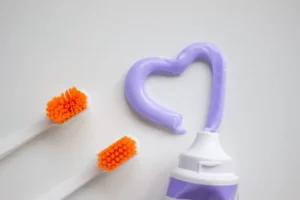
Fluoride is a natural mineral that is capable of protecting your teeth. It is contained within most toothpaste as it strengthens the enamel and helps defend against bacteria attacks.
Moreover, dentists even perform topical fluoride applications during regular check-ups to ensure the teeth and the smile remain healthy.
It is essential to use toothpaste that contains 1,000-1,500 ppm. This is the recommended dosage for optimal results. Furthermore, excessive fluoride consumption can also have a negative effect, especially on young children whose teeth are still developing. This can cause a condition called fluorosis, which affects both the enamel and dentin. However, fluoride is entirely safe as long as it is used moderately.
4. Floss daily
Flossing is key to maintaining a healthy smile. It is the only way to effectively remove plaque and food between your teeth and prevent gum disease.
Unfortunately, the toothbrush bristles cannot reach the tight spaces between your teeth. This eventually leads to plaque build-ups, caries, and gum disease. However, dental floss can perfectly fit those areas and remove anything that could harm your smile.
However, it is vital to be gentle while flossing since you can injure the gum papillae between your teeth effortlessly. Furthermore, to perform the best flossing technique, you should loop the string on your middle fingers and then guide the movement with your thumb and index finger.
5. Use a mouthwash
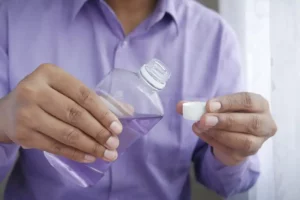
Medicated mouthwashes are the best way to finish your dental care routine and maintain a healthy smile. These products offer multiple benefits depending on which one you get.
Most mouthwashes contain fluoride to help strengthen the teeth. Moreover, some of these have extra elements in their formula to achieve other benefits, such as helping control plaque, freshening the breath, and even whitening the teeth.
Nonetheless, dentists recommend not to rinse with water after rinsing with mouthwash. This way, you ensure that the products remain on the teeth as long as possible to deliver their therapeutic effect. Lastly, you should also try avoiding mouthwashes containing alcohol as they can dry your mouth.
6. Have a healthy diet and limit snacking

What you eat plays a significant role in your smile. Bacteria metabolize sugars to continue living and reproducing. Moreover, this process releases acids that demineralize the enamel, eventually resulting in caries or cavities.
Therefore, reducing sugar intake and having a healthy and well-balanced diet can reduce the number of nutrients that harmful bacteria need. Nonetheless, food with acidic pHs, such as tomatoes, lemon and wine, can slowly damage your enamel. Very important to keep in mind: limit the amount of snacking in a day to a minimum, especially sugary or sticky snacks.
Moreover, a healthy diet also means that your immune system is strong enough to withstand and prevent gum disease.
Lastly, adding bubble gum containing xylitol to your diet can help you maintain a healthy smile. This particular element offers anti-cariogenic effects, as it can prevent the growth of harmful bacteria. However, you should be aware that the bubble gum you choose contains xylitol and is sugar-free.
7. Avoid brushing immediately after eating certain foods
If you’re eating an acidic salad, with lots of tomatoes and lemon juice, the mouth pH tends to drop. As a result, the enamel temporarily weakens and is more susceptible to attacks.
Therefore, brushing your teeth while the enamel is affected can increase the risk of eroding it.
For this reason, dentists usually recommend wanting at least 30 minutes after eating before brushing your teeth. During this time, saliva can neutralize the acids and restore balance to the mouth.
Nonetheless, you can brush right away but only after rinsing with water as it helps wash away the acid first.
8. Visit your dentist
Bacteria can thrive in the mouth and cause damage even with an outstanding dental care routine. A minor flaw in your brushing or flossing technique can result in calculus and gum disease. Therefore, it is highly recommended to schedule periodic appointments with your dentist for check-ups.
Moreover, most dental problems do not cause symptoms in their initial stages. For this reason, it can be hard to self-identify dental diseases early on. However, your dentist can evaluate your mouth and solve any issues you might have. Furthermore, he can perform a dental cleaning to ensure your smile remains healthy.
Fortunately, most dental insurance covers cleanings. Therefore, you can go to your yearly check-up without worrying about anything.
The takeaway
Maintaining a healthy smile can be done efficiently by having good dental care and visiting your dentist regularly.
While brushing your teeth twice a day is essential, you should also use the appropriate technique and toothbrush. Moreover, it should be done in association with floss and mouthwash for a better result.
Lastly, the diet also plays an essential role in maintaining a healthy smile. It is highly recommended to maintain a well-balanced diet and limit the amount of snacking to achieve the best results possible and ensure your smile and teeth remain healthy.
Make an appointment at Smile Dental Clinic and enjoy all the benefits of a perfect and healthy smile.
References
- ADA. (n.d.). Fluoride: Topical and systemic supplements. American Dental Association. Retrieved July 15, 2022
- ADA. (n.d.). Toothpastes. American Dental Association. Retrieved July 15, 2022
- Cafasso, J. (2019, July 3). What is fluoride? uses, benefits, side effects, and safety. Healthline. Retrieved July 15, 2022
- Colgate . (n.d.). 3 tooth brushing techniques: Colgate®. 3 Tooth Brushing Techniques | Colgate®. Retrieved July 15, 2022
- Dansinger , M. (2021, December 7). Diabetes and mouth problems: Fighting gum disease. WebMD. Retrieved July 15, 2022
- Frisbee, E. (2021, July 29). Dental Health and endocarditis prevention. WebMD. Retrieved July 15, 2022
- Gondivkar, S. M., Gadbail, A. R., Gondivkar, R. S., Sarode, S. C., Sarode, G. S., Patil, S., & Awan, K. H. (2019). Nutrition and oral health. Disease-a-Month, 65(6), 147–154
- Higuera, V. (2020, January 8). How to floss properly: Step-by-step guide to flossing teeth. Healthline. Retrieved July 15, 2022
- Nayak, P. A., Nayak, U. A., & Khandelwal, V. (2014). The effect of xylitol on dental caries and Oral Flora. Clinical, Cosmetic and Investigational Dentistry, 89–94
- Preidt, R. (2021, March 29). Gum disease linked to high blood pressure. WebMD. Retrieved July 16, 2022
- Watson, K. (2019, November 25). How to use mouthwash safely and properly: What you need to know. Healthline. Retrieved July 16, 2022
- Watson, K. (2021, September 20). Should you brush your teeth before or after breakfast? Healthline. Retrieved July 15, 2022